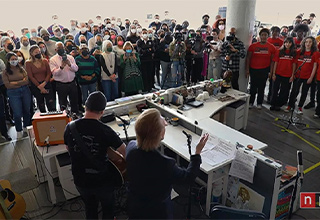Spoons
TECHN0VIKING
Published
04/06/2009
Spoons
Last week, we took
some friends out to a
new restaurant, and noticed that the waiter who took our
order carried a spoon
in his shirt pocket. It seemed a little strange.
When the waiter brought
our water and cutlery, I noticed he also had a spoon in his
shirt pocket. Then I
looked around and saw that all the staff had spoons in
their
pockets.
When the waiter came back to serve our soup I asked,
"Why the
spoon?" "Well, "he explained, "the
restaurant’s owners hired Andersen Consulting
to revamp all our processes. After several months of
analysis, they concluded
that the spoon was the most frequently dropped piece of
cutlery. It represents a
drop frequency of approximately 3 spoons per table per
hour. If our staff are
better prepared, we can reduce the number of trips back to
the kitchen and save
15 man-hours per shift."
As luck would have it, I dropped my spoon and
he was able to replace it with his spare. "I’ll get
another spoon next time I go
to the kitchen instead of making an extra trip to get it
right now." I was
impressed.
I also noticed that there was a string hanging out of the
waiter’s zip on his trousers. Looking around, I noticed
that all the waiters had
the same string hanging from their flies. So before he
walked off, I asked the
waiter, "Excuse me, but can you tell me why you have
that string right
there?"
"Oh, certainly!" Then he lowered his voice.
"Not everyone is so
observant. That consulting firm I mentioned also found out
that we can save time
in the rest-room. By tying this string to the tip of you
know what, we can pull
it out without touching it and eliminate the need to wash
our hands, shortening
the time spent in the rest-room by 76.39 per cent."
I asked "After you
get it out, how do you put it back?"
"Well," he whispered, "I don’t know
about the others, but I use
the spoon."
Last week, we took
some friends out to a
new restaurant, and noticed that the waiter who took our
order carried a spoon
in his shirt pocket. It seemed a little strange.
When the waiter brought
our water and cutlery, I noticed he also had a spoon in his
shirt pocket. Then I
looked around and saw that all the staff had spoons in
their
pockets.
When the waiter came back to serve our soup I asked,
"Why the
spoon?" "Well, "he explained, "the
restaurant’s owners hired Andersen Consulting
to revamp all our processes. After several months of
analysis, they concluded
that the spoon was the most frequently dropped piece of
cutlery. It represents a
drop frequency of approximately 3 spoons per table per
hour. If our staff are
better prepared, we can reduce the number of trips back to
the kitchen and save
15 man-hours per shift."
As luck would have it, I dropped my spoon and
he was able to replace it with his spare. "I’ll get
another spoon next time I go
to the kitchen instead of making an extra trip to get it
right now." I was
impressed.
I also noticed that there was a string hanging out of the
waiter’s zip on his trousers. Looking around, I noticed
that all the waiters had
the same string hanging from their flies. So before he
walked off, I asked the
waiter, "Excuse me, but can you tell me why you have
that string right
there?"
"Oh, certainly!" Then he lowered his voice.
"Not everyone is so
observant. That consulting firm I mentioned also found out
that we can save time
in the rest-room. By tying this string to the tip of you
know what, we can pull
it out without touching it and eliminate the need to wash
our hands, shortening
the time spent in the rest-room by 76.39 per cent."
I asked "After you
get it out, how do you put it back?"
"Well," he whispered, "I don’t know
about the others, but I use
the spoon."





3 Comments